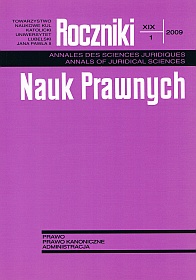The Office of Minister in the Years 1918-1939 Legal Basis
Abstract
Subsequent constitutions of the Second Republic of Poland, i.e. the March Constitution (1921) and the April Contitution (1935), determined on the one hand the mutual relation between the State and society as well as the extent of the State’s interference, and on the other the position and tasks of the administration with respect to the other bodies of State authority.
Although it was the Prime Minister who represented the government externally, headed its activities and determined the general outline of the State policy, both constitutions provided for individual liability of the interior minister. In addition to parliamentary and constitutional liabilities, the April Constitution added political one, which in fact was to become the most important.
As far as the structure of the central bodies (ministries) were concerned, neither of the constitutions specified the number and competences of the ministers, leaving these matters to normal course of legislation. Yet, until 1939 this matter remained unresolved.
Copyright (c) 2009 Roczniki Nauk Prawnych

This work is licensed under a Creative Commons Attribution-NonCommercial-NoDerivatives 4.0 International License.


